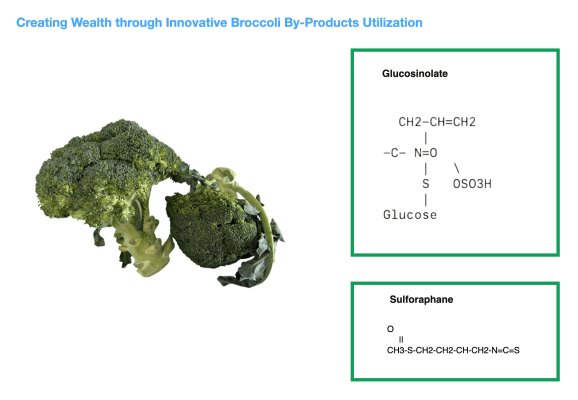
Creating Wealth through Innovative Broccoli By-Products Utilization
- Description details
-
1. Introduction
The efficient utilization of agricultural by-products is becoming increasingly important in today’s sustainable food production systems. One such promising area is the processing of broccoli by-products, which include stems, leaves, trimmings, and florets that are not suitable for fresh consumption. These by-products, often collected from processing plants, farms, and packaging facilities, present an excellent opportunity for value addition. This blog explores a comprehensive system for identifying, processing, and utilizing broccoli by-products, detailing their potential applications in nutraceuticals, animal feed, composting, and bioenergy production. By implementing such systems, we can not only reduce waste but also create economically viable and environmentally friendly solutions.
2. Raw Material Identification and Collection
• By-products: Stems, leaves, trimmings, and florets not suitable for fresh consumption.
• Collection Points: Processing plants, farms, and packaging facilities where broccoli is prepared for market.
3. Initial Processing and Sorting
• Sorting and Cleaning: Use sorting and cleaning equipment to separate edible from non-edible parts and remove any dirt or foreign matter.
• Chopping and Grinding: Utilize industrial choppers and grinders to break down the collected by-products into manageable sizes for further processing.
4. Utilization Pathways
A. Nutraceuticals and Functional Foods
1. Extraction of Bioactive Compounds:
• Glucosinolates and Sulforaphane: Use solvent extraction or supercritical CO2 extraction to obtain these compounds known for their cancer-preventive properties.
• Antioxidants: Extract phenolic compounds using water or ethanol-based extraction methods.
• Processing Equipment: Extraction units, centrifuges, and filtration systems.
2. Applications:
• Dietary Supplements: Capsules, tablets, or powders containing concentrated broccoli extracts.
• Functional Foods: Incorporate extracts into smoothies, health bars, or fortified foods.
B. Animal Feed
1. Feed Preparation:
• Drying: Use dehydrators or drying ovens to reduce the moisture content of the by-products.
• Pelletizing: Grind the dried materials and use a pellet mill to form animal feed pellets.
2. Nutritional Benefits:
• Livestock Feed: High in fiber and nutrients, suitable for cattle, sheep, and other livestock.
• Poultry Feed: Provide a source of vitamins and minerals for poultry.
C. Composting and Soil Amendments
1. Composting Process:
• Shredding: Shred the broccoli by-products to increase the surface area and accelerate decomposition.
• Composting: Use aerobic composting techniques in windrows or compost bins.
2. Soil Amendment Production:
• Vermicomposting: Utilize earthworms to produce nutrient-rich vermicompost.
• Application: Use the compost as a natural fertilizer to improve soil health and fertility.
D. Bioenergy Production
1. Anaerobic Digestion:
• Biogas Production: Convert organic matter from broccoli by-products into biogas using anaerobic digesters.
• Digestate: Use the by-product of anaerobic digestion as a biofertilizer.
2. Equipment:
• Anaerobic Digesters: For biogas production.
• Gas Collection Systems: To capture and store the biogas produced.
5. Implementation and Integration
• Pilot Testing: Conduct pilot tests to optimize extraction methods, drying processes, and composting techniques.
• Process Optimization: Continuously monitor and improve the processes for efficiency and yield.
• Market Development: Identify markets for the nutraceuticals, animal feed, compost, and bioenergy produced.
6. Sustainability and Economic Viability
• Environmental Impact: Assess the environmental benefits such as reduced waste and improved soil health.
• Economic Analysis: Conduct a cost-benefit analysis to ensure the system’s profitability and sustainability.
• Partnerships: Collaborate with agricultural, nutritional, and energy sectors to develop a comprehensive utilization system.
7. Conclusion
In conclusion, the systematic utilization of broccoli by-products can significantly contribute to sustainable agricultural practices and environmental conservation. Through initial sorting and processing, these by-products can be transformed into valuable products such as dietary supplements, animal feed, compost, and bioenergy. The integration of pilot testing and process optimization ensures efficiency and yield, while market development helps in identifying potential markets. By assessing the environmental and economic impacts, and fostering partnerships across various sectors, we can establish a comprehensive and sustainable utilization system. This approach not only mitigates waste but also enhances the profitability and sustainability of broccoli processing, demonstrating a viable model for other agricultural by-products.
- About us
-
For more information:
